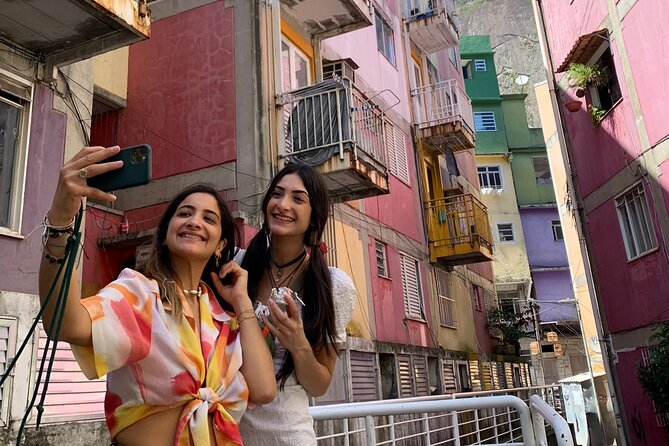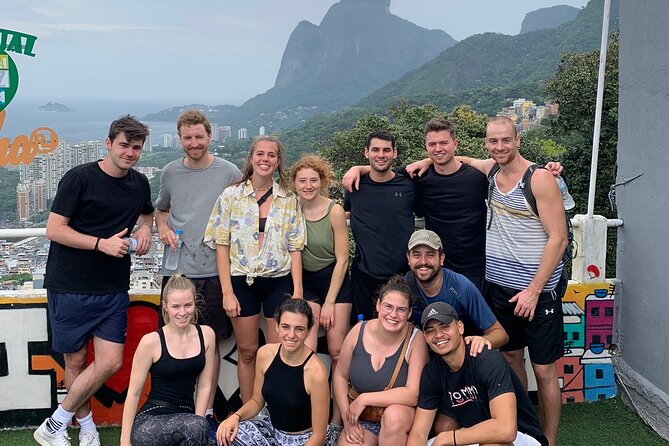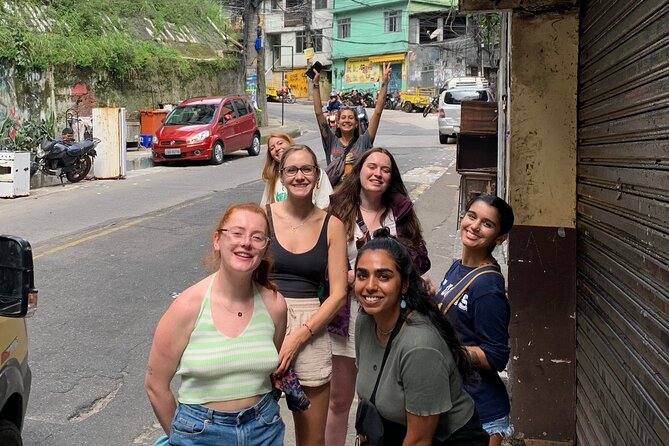The term ‘favela’ often conjures up images of hardship and despair, yet the truth paints a much richer picture. In Brazil, these vibrant neighborhoods pulse with life, showcasing an array of cultural expressions and community spirit that often goes unnoticed. Residents navigate daily challenges with resilience, weaving a tapestry of art, music, and innovation that reflects their identity. As one explores the layers of life within a favela, they may discover surprising stories of hope and transformation that challenge preconceived notions and invite deeper understanding of this unique urban landscape.
Key Points

- Favelas are vibrant informal settlements in Brazil, showcasing unique cultures, community resilience, and socio-economic challenges beyond poverty and crime.
- They emerged in the late 19th century due to urbanization and the need for housing after the abolition of slavery.
- Daily life in favelas blends challenges with community spirit, featuring local vendors, educational activities, and strong social ties among residents.
- Cultural contributions from favelas, such as samba, funk, and street art, significantly influence Brazil’s artistic landscape and promote cultural pride.
- Tourism in favelas can boost local economies but also risks displacement; balancing benefits with community integrity is essential.
Understanding the Term Favela
A favela, often misunderstood, refers to a vibrant and complex informal settlement in Brazil, primarily characterized by its unique culture, community resilience, and socio-economic challenges.
These neighborhoods, often built on hilly terrains, showcase an incredible spirit of collaboration among residents who develop their own systems of support and services.
While favelas are frequently associated with poverty and crime, they also burst with creativity, featuring local art, music, and entrepreneurial ventures.
Residents cultivate strong social networks that foster a sense of belonging and cultural identity.
It’s essential to recognize that favelas represent more than just economic struggle; they embody the strength and vitality of their communities, challenging stereotypes and encouraging a deeper understanding of urban life in Brazil.
You can also read our reviews of more tours and experiences in Rio de Janeiro.
Historical Context of Favelas

Emerging in the late 19th century, favelas began as informal settlements for those displaced by urbanization and economic changes in Brazil, reflecting the complex interplay of social and economic factors that shaped the country’s urban landscape.
These communities often formed on the outskirts of major cities, where government infrastructure and services were minimal. The abolition of slavery in 1888 further contributed to this phenomenon, as many freed individuals sought housing and opportunities in urban areas.
Over time, favelas became synonymous with poverty and marginalization, yet they also fostered unique cultures and resilient communities. Understanding this historical context is crucial for appreciating the diverse realities of favela life today, which often challenges stereotypes and misconceptions surrounding these vibrant neighborhoods.
Daily Life in a Favela

Life in a favela unfolds with a unique blend of challenges and vibrant community spirit, where residents navigate daily routines amidst the backdrop of their rich cultural heritage.
People often start their day early, with vendors setting up stalls to sell fresh produce and handmade goods. Children rush to school, while adults commute to work, often relying on informal transportation options.
Despite limited resources, families find joy in communal gatherings, sharing meals, and celebrating local traditions. Markets pulse with life, offering a variety of colorful items, from food to crafts.
Though safety concerns exist, many residents foster a strong sense of belonging and resilience, working together to create a supportive environment that transcends the stereotypes often associated with favelas.
The Role of Community
Community plays a vital role in favelas, fostering connections that empower residents to support one another through shared resources and collective resilience. In these vibrant neighborhoods, people often form strong bonds, participating in local events, mutual aid initiatives, and neighborhood associations.
This sense of belonging not only enhances social cohesion but also encourages collaboration in addressing common challenges. Community leaders frequently work tirelessly to advocate for residents’ needs, creating spaces for dialogue and action.
Through education, cultural activities, and communal projects, they uplift their surroundings and instill pride in their identities. Ultimately, the spirit of community transforms favelas into thriving environments, showcasing the strength of human connection amid adversity and inspiring hope for future generations.
Economic Challenges and Opportunities
Favelas in Rio de Janeiro face significant economic challenges, yet they also present unique opportunities for innovation and entrepreneurship among their resilient residents.
Many individuals struggle with limited access to formal employment and financial resources, often relying on informal work to make ends meet. However, this adversity has fostered creativity, leading to the emergence of small businesses that cater to local needs.
Street vendors, artisans, and tech startups thrive in these communities, showcasing the entrepreneurial spirit that defines favela life. Plus, social enterprises are increasingly addressing local issues, providing training and support for aspiring business owners.
- 7-Hour Island Adventure: Fernando De Noronha Ilhatour
- Private Tour: Rio City Essentials Including Christ the Redeemer and Sugar Loaf
- Paragliding or Hang Gliding Included Pick up and Drop off From Your Hotel.
- Christ the Redeemer + City Tour: Transfers, Local Guide and Tickets.
- Christ the Redeemer, Selaron, Cathedral, Maracana, Sambadrome Half-Day Tour
- Private City Tour of Rio De Janeiro
Cultural Contributions of Favelas
Remarkably vibrant and diverse, the cultural contributions from these neighborhoods have significantly shaped Brazil’s artistic landscape, influencing music, dance, and visual arts. Favelas are the birthplace of iconic rhythms like samba and funk, which resonate globally. Street art flourishes, telling powerful stories through murals that reflect the community’s struggles and triumphs. Festivals in favelas showcase traditional dances, reinforcing cultural pride and unity.
| Art Form | Key Characteristics | Notable Influence |
|---|---|---|
| Music | Rhythmic and expressive | Samba, Funk |
| Dance | Energetic and communal | Capoeira, Samba de Roda |
| Visual Arts | Colorful, narrative murals | Graffiti, Installations |
| Festivals | Celebratory and inclusive | Carnival, Local Events |
Tourism and Its Impact

Tourism plays a crucial role in shaping the economy and social dynamics of Rio de Janeiro’s favelas, providing both opportunities and challenges for local residents.
The Favela Lives Tour, for example, offers insights into daily life, fostering understanding and respect among visitors. Local entrepreneurs benefit from increased foot traffic, selling crafts and food, which helps improve their livelihoods.
However, tourism can also lead to rising prices and displacement, as demand for properties increases. Plus, some residents feel that their lives become commodified, reducing complex stories to mere attractions.
Balancing these benefits and drawbacks is essential to ensure that tourism supports rather than undermines the community’s integrity and culture. Respectful engagement and responsible practices can help create a more sustainable tourism model.
Debunking Myths About Favelas

Many people hold misconceptions about the vibrant communities known as favelas, often viewing them solely through the lens of crime and poverty rather than recognizing their rich culture and resilience.
These neighborhoods aren’t just synonymous with hardship; they’re dynamic hubs filled with creativity, entrepreneurship, and strong community ties. Residents actively work to improve their environments, creating art, music, and businesses that contribute to Rio’s cultural landscape.
Contrary to popular belief, crime isn’t the defining characteristic of favelas; instead, many are safe and welcoming.
Frequently Asked Questions
How Can I Safely Visit a Favela?
To safely visit a favela, travelers should book guided tours with reputable companies, stay in groups, respect local customs, and follow their guide’s advice. Engaging with knowledgeable locals enhances understanding and ensures a respectful experience.
What Should I Wear When Touring a Favela?
When touring a favela, visitors should wear comfortable clothing and sturdy shoes. Lightweight fabrics are ideal for warm weather, and a hat or sunglasses can provide protection from the sun during the outdoor exploration.
Are There Age Restrictions for Favela Tours?
Carlos ensures the Favela Lives Tour welcomes all ages, though young children should be accompanied by adults. He emphasizes safety and engagement, making the experience enjoyable for both younger and older participants alike.
Is Photography Allowed in Favelas During Tours?
During the Favela Lives Tour, participants can take photographs, but they’re encouraged to be respectful and mindful of the community. Guides like Carlos help ensure everyone understands the culture and context behind each shot.
How Do Favela Tours Support Local Communities?
Favela tours support local communities by generating income, promoting entrepreneurship, and fostering cultural exchange. They empower residents through job opportunities, encourage local businesses, and help dispel stereotypes, creating a more respectful understanding of their lived experiences.
Recap
To sum it up, the term ‘favela’ encompasses much more than poverty and crime; it represents vibrant communities filled with resilience and creativity.
Residents forge strong social ties, celebrate their culture, and navigate economic challenges with innovation and determination.
By recognizing the true essence of favelas, society can foster a deeper understanding and appreciation for these neighborhoods, ultimately challenging stereotypes and highlighting the rich contributions they make to Brazil’s cultural landscape.
More Tour Reviews in Rio de Janeiro
Not for you? Here's more nearby things to do in Rio de Janeiro we have reviewed
- Evening Experience at a Carioca Samba School
- Rio de Janeiro: Wake Up and Sail
- Boat Tours in Búzios
- From Rio de Janeiro: Arraial do Cabo Island Day Trip
- Petropolis the Imperial City With Beer Tour and Lunch
- 25 Best Tours in Rio De Janeiro
- 25 Best Guided Tours in Rio De Janeiro
- 3 Best Shore Excursions in Rio De Janeiro
- 9 Best Shopping Tours in Rio De Janeiro
- 18 Best Drinking Tours in Rio De Janeiro
- 24 Best National Park Tours in Rio De Janeiro
- Rio Sunrise Private Tour
